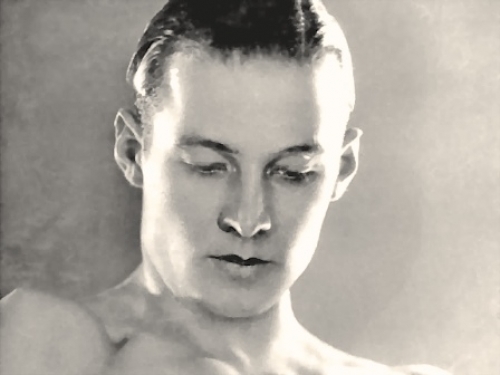On August 24, 1926, an estimated 100,000 people lined the streets of NYC to pay their respects at the funeral of Rodolfo Alfonso Raffaello Pierre Filibert Guglielmi di Valentina d'Antonguolla or, as he was professionally known, Rudolph Valentino, the 1920s pop icon and onscreen sex symbol. There was mass hysteria as fans smashed windows trying to enter the funeral which escalated into an all-day riot that took 100 mounted officers and police reserves to restore order. There were even reports of despondent fans committing suicide. A second funeral was held later in Beverly Hills, CA where his body was conveyed by train. He was buried in a crypt that a female friend had originally purchased for her then ex-husband. The 31-year-old “Latin Lover” who, on December 23, 1913 at age 18 was processed at Ellis Island, was and is the epitome of an immigrant success story.
Valentino’s mother was French-born and his father, an Italian veterinarian, died when Valentino was 11. Valentino was coddled and pampered by his mother to the dismay of a disenchanted father. He was less than an average student but went on to earn a degree in Agriculture in Genoa. Valentino lived in Paris for a short period and in 1912 returned to Italy where his plight was no better. Financially strapped, he came to NYC in 1913 and worked bussing tables and gardening before becoming a taxi dancer – a paid dance partner. Eventually leaving New York, Valentino settled in a one room apartment on Sunset Blvd. in Hollywood. He continued dancing and teaching dance and began seeking screen roles. He started as an extra then moved on to small parts in silent films until being “discovered” in “The Four Horsemen of the Apocalypse.” In 1921, the film was a huge success; it was one of the first films to gross over $1,000,000 in the box office.
This success paved the way for further roles such as the lead role in “Sheik” thereby solidifying Valentino’s success, image and superstardom. He played the lead as a bullfighter in “Blood and Sand” in 1922 and critics scored it as another masterpiece and one of his best films. It was one of the top four grossing movies of 1922 and it set attendance records everywhere in movie houses.
There was no need for words on the screen for Valentino. He was simply there with bedazzled eyes, charm and charisma that projected love scenes befitting canvas masterpieces. His smoldering eyes, slicked black hair and dilated nostrils established this Italian as the world’s greatest lover. Scribes reported “women were like flies to a honey pot. He could never shake them off.” To men, Valentino was a fashion statement. They emulated his tight-fitting, tango-style suits, sideburns and black hair.
Valentino was quoted, “Women are not in love with me but with the picture of me on the screen. I am merely the canvas on which women paint their dreams.” And, “To generalize on women is dangerous. To specialize on them is infinitely worse.”
On August 15, 1926, Valentino collapsed at the Ambassador Hotel in NYC and was hospitalized suffering from appendicitis and gastric ulcers requiring an immediate operation. Despite surgery, Valentino developed peritonitis and, though seemingly on the road to recovery, he died on August 23.
A statue of Valentino was unveiled in his hometown of Castellaneta, Italy in 1961, and many events are still held in his honor there.
His Beverly Hills mansion, Falcon Lair, was sold to help pay estate expenses. Valentino had applied for American citizenship shortly before his death.



